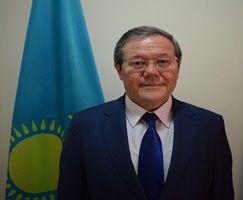
The East Africa Electric Highway project, a pivotal power infrastructure initiative among Ethiopia, Kenya, and Tanzania, has entered a new phase with the official commencement of trial power supply from Kenya to Tanzania. This achievement builds on Ethiopia’s broader ambition to establish itself as a renewable energy hub in East Africa.
This milestone follows the successful establishment of a high-capacity power connection between Ethiopia and Kenya, enabled by advanced power transmission technology. Ethiopia’s role as a supplier of clean energy in the region has been further cemented through this collaboration. The subsequent phase of the project, linking Kenya and Tanzania, has now been completed, enabling trial power distribution and setting the stage for a fully operational regional power grid.
The regional power connection is expected to strengthen cooperation among the participating nations by facilitating the supply of consistent, cost-effective, and renewable energy.
As it is understood, Ethiopia has abundant renewable energy sources among others, hydropower, wind, geothermal and solar. These reach sources due to lack of finance, technology and skilled manpower is not yet fully exploited. If they are rebranded and explored can attract foreign investment and create job opportunities to thousands and enhance the energy grid.
Ethiopia is located in the tropical zone of Africa and the zone is enriched with solar energy and if the resource is fully exploited it can make the nation a symbol of the renewable energy supplier. The above mentioned initiative expands its capacity to export green electricity, furthering its leadership in regional energy trade.
In human history the first energy source used by humans is labor for hunting animals to meet their food demand and later the domestication of animals enabled them to use animal’s labor for means of transportation and plowing farms. Side by side with these, the discovery of fire through the friction of stones paved the way for the usage of fire for hit as bio mass energy.
History also proved that there is correlation between science and technology advancement and economic development utilizing various sources of energy. Before the advent of industrial revolution in Great Britain in 1850 wind energy was used for ship fleets and explorers discovered various continents, Islands and identified the locations of oceans and seas. Later could create steam engine based ships which boost water transportation all over the world.
As time passed the discovery of coal energy served to build big ships which carried heavy products and raw material to transport from one continent to the other. Industrial machines which propel their engine by coal hit also enabled to enhance production volume and productivity in many folds. After the advent of science and technology the exploration of benzene, naphthalene and kerosene further helped to meet the energy demand and advanced industrialization and technological innovation.
These all clearly indicate that without the exploiting and utilization of energy sources, attaining any development would not be impossible.
But the above mentioned energy sources such as bio mass, coal, benzene, naphthalene and Kerosene which are carbon based and none renewable sources utilized for various purposes have been brought a devastating impact on the environment manifested by climate change and global warming.
To mitigate the problem, changing the utilization of carbon based energy to the renewable energy step by step has been taken as a way out by all countries under the auspicious of the United Nations.
Unlike the carbon based energy, the renewable energy sources are abundantly and cheaply available and utilizing them contributes to the nation aspiration to develop carbon free economy and supports efforts of climate change mitigating that the nation strives to achieve..
According to the Ministry of Water and Energy, Ethiopia annually spends 4 billion Dollars for the importation of Benzene, Kerosene and air plane fuel. so incurring such staggering amount of money is not advisable for the emerging nations. According to studies, Ethiopia only utilized 5 percent of its water resources that can be used for power generation and irrigation farming. It has four river basins including the Nile, Omo, Awash and Shebele basins and 2/3 of the water volume flows in the Nile basins.
Currently all waters available in all basins are more or less exploited both for hydro power generation and irrigation and still have huge potential to contribute for the nation economic endeavor.
The endeavor for the exploitation of water sources for energy purpose began during the Emperor Hailesilasie I era according to a study that had been conducted by American experts on Nile River and its tributaries in the 1950s.
The study outcome indicated that it was feasible that constructing big dam in the current place of the water bed of the river. In addition constructing 100 small and medium size hydropower dams in the tributaries of the river had been recommended as option.
However, long was the journey dark was the night to accomplish such projects and realize sole right of the cardinal principle to utilize own natural resources. Due to fundamental changes of circumstances, some countries used to be nose pokers upon internal affairs. Nonetheless Ethiopians played their card well in the international diplomatic arena to reach the helm.
In the last two decades and a half the government has been strived for the exploration and exploitation of hydro power and spent its time, human resource and finance for construction of dams. Among others the Tekeze, Gilgelgihbe I II and III and Tana Belese can be mentioned regard and all contribute to the national power grid. The ongoing construction of the Koisha and the Hidasie dams are expected to change the energy landscape of the nation.
Currently due to shortage of hard currency, the construction work of Koisha dam has been delayed. To alleviate the problem, the government has been tried its level best and resorted to mobilize financial resource from outside and by now the construction work has been on the right track and sooner ready to eye its accomplishment.
As mentioned above it is proved that Ethiopia has abundant renewable energy sources in the horn Africa and there is high energy demand in the region. The region is also known by high population growth, underdevelopment, rampant poverty, unemployment and agrarian economy hence, to alleviate the multifaceted challenges faced the region striving for economic growth is essential. Modernizing the agricultural sector through expanding irrigation farming and harvesting more than twice a year can accelerate production helpful for ensuring food security.
On the other hand, expanding manufacturing and service sector for creating job opportunity, boost export, substitute import and advance innovation further play crucial role on poverty eradication and economic progress. These endeavors also showed that there is high demand of energy in the region and Ethiopia can tap this market. The East Africa Electric Highway project can give response for this energy demand which Ethiopia has highnstake.
Initial estimates suggest the project could generate approximately USD 200 million annually through electricity trading, providing much-needed revenue and fostering sustainable economic growth.
By reducing dependence on fossil fuels, the project also aligns with global environmental goals and supports East Africa’s transition to a greener energy future. It showcases the region’s commitment to leveraging renewable resources for sustainable development.
A significant driver behind Ethiopia’s renewable energy exports is the Grand Ethiopian Renaissance Dam (GERD). As Africa’s largest hydroelectric project, GERD is expected to generate over 6,000 MW of electricity upon completion. This massive energy capacity not only addresses domestic electricity needs but also provides surplus power for export to neighboring countries, including Kenya, Tanzania, Sudan, and South Sudan.
GERD has already transformed Ethiopia into a key player in the regional energy market. With its ability to deliver consistent and clean electricity, the dam underpins Ethiopia’s ambition to become a leader in renewable energy production and trade. Combined with the East Africa Electric Highway, GERD strengthens Ethiopia’s energy export infrastructure and bolsters the country’s diplomatic and economic influence in the region.
The East Africa Electric Highway project has received financial backing from the World Bank, the African Development Bank (AfDB), and the Agence Française de Développement (AFD). These institutions have recognized the project’s potential to foster regional integration, reduce energy costs, and promote sustainable development.
The collaboration among Ethiopia, Kenya, and Tanzania demonstrates the power of regional partnerships in addressing shared challenges. By pooling resources and expertise, these nations are taking bold steps toward creating a stable, interconnected energy network that benefits the entire region.
As the trial power supply progresses, the successful implementation of the East Africa Electric Highway will mark a significant leap toward achieving regional energy security. By connecting Ethiopia’s hydroelectric power to a broader network, the project promises to transform East Africa into a model of renewable energy integration, driving economic growth and environmental sustainability for years to come.
BY ABEBE WOLDEGIORGIS
THE ETHIOPIAN HERALD SUNDAY EDITION 29 DECEMBER 2024




